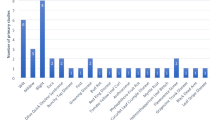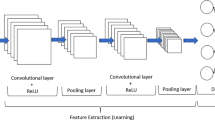Abstract
With the advancement of deep learning and thermal imaging technology, prediction of plant disease before the appearance of any visual symptoms gains attention. Studies showed that before the appearance of any visual symptoms, some internal changes take place in the plant that cannot be detected externally. These changes may be captured by the thermal images which will help to predict the diseases at the earlier stage. This early prediction will increase the probability and time to recovery; reduce the use of pesticide, resulting in cost effective, quantitative and qualitative production with less environmental pollution.
In this study a plant disease prediction system based on thermal images has been developed by exploring the dynamic feature extraction capability of deep learning technology. The proposed system consists of three convolutional layers to overcome the computational overhead and the over fitting problem for small dataset. The system has been tested with a very common disease Bacterial Leaf Blight, of rice plants.
The proposed model has been evaluated using several metrics like accuracy, precision, type-I error, type-II error. This novel model predicts the disease at the earliest stage (within 48 h of the inoculation) with 95% accuracy and high precision 97.5% (2.3% Type-I error and 7.7% Type-II error). A comparative study has been done with four standard deep learning models -VGG-16, VGG-19, Resnet50 and Resnet101 and also with machine learning algorithms -Linear Regression and Support Vector Machine, to establish the superiority of the proposed model.





Similar content being viewed by others
Data Availability (data transparency)
The data that support the findings of this study are available on request from the corresponding author. The data are not publicly available due to privacy or ethical restrictions.
Code Availability (software application or custom code)
The code is available on request from the corresponding author.
References
Alpaydin, E. (2020). Introduction to machine learning. MIT press
Banerjee, K., Krishnan, P., & Mridha, N. (2018). Application of thermal imaging of wheat crop canopy to estimate leaf area index under different moisture stress conditions. Biosystem Engineering, 166, 13–27
Barz, B., & Denzler, J. (2020). Deep learning on small datasets without pre-training using cosine loss. In Proceedings of the IEEE/CVF Winter Conference on Applications of Computer Vision, 1371–1380
Battalwar, P., Gokhale, J., & Bansod, U. (2015). Infrared thermography and IR camera. International Journal of Research in Science & Engineering, 1(3), 9–14
Bayoumi, T. Y., & Abdullah, A. A. (2016). Application of thermal imaging sensor to early detect powdery mildew disease in wheat. Journal of Middle East North Africa Science, 10(3907), 1–8
Bhakta, I., Phadikar, S., & Majumder, K. (2018). January. Importance of Thermal Features in the Evaluation of Bacterial Blight in Rice Plant. In Proceedings of the Annual Convention of the Computer Society of India. Springer, Singapore, 300–313
Calderón, R., Navas-Cortés, J. A., & Zarco-Tejada, P. J. (2015). Early detection and quantification of Verticillium wilt in olive using hyperspectral and thermal imagery over large areas. Remote Sensing, 7(5), 5584–5610
Chen, Y. R., Chao, K., & Kim, M. S. (2002). Machine vision technology for agricultural applications. Computers and electronics in Agriculture, 36(2–3), 173–191
Chen, P., & Shakhnovich, E. I. (2010). Thermal adaptation of viruses and bacteria. Biophysical journal, 98(7), 1109–1118
Chung, C. L., Huang, K. J., Chen, S. Y., Lai, M. H., Chen, Y. C., & Kuo, Y. F. (2016). Detecting Bakanae disease in rice seedlings by machine vision. Computers and electronics in Agriculture, 121, 404–411
Elazegui, F. (2003). Diagnosis of Common Diseases of Rice. International Rice Research Institute
Gull, A., Lone, A. A., & Wani, N. U. I. (2019). Biotic and Abiotic Stresses in Plants. Abiotic and Biotic Stress in Plants. IntechOpen
He, K., Zhang, X., Ren, S., & Sun, J. (2016). Deep residual learning for image recognition. In Proceedings of the IEEE conference on computer vision and pattern recognition, 770–778
Hornero, A., Zarco-Tejada, P. J., Quero, J. L., North, P. R. J., Ruiz-Gómez, F. J., Sánchez-Cuesta, R., & Hernandez-Clemente, R. (2021). Modelling hyperspectral-and thermal-based plant traits for the early detection of Phytophthora-induced symptoms in oak decline. Remote Sensing of Environment, 263, 112570
Kim, Y., Still, C. J., Roberts, D. A., & Goulden, M. L. (2018). Thermal infrared imaging of conifer leaf temperatures: Comparison to thermocouple measurements and assessment of environmental influences. Agricultural and Forest Meteorology, 248, 361–371
Krizhevsky, A., Sutskever, I., & Hinton, G. E. (2017). Imagenet classification with deep convolutional neural networks. Communications of the ACM, 60(6), 84–90
Lachenbruch, P. A. (2014). McNemar test. Wiley StatsRef: Statistics Reference Online
LeCun, Y., Kavukcuoglu, K., & Farabet, C. (2010). Convolutional networks and applications in vision. Proceedings of 2010 IEEE International Symposium on Circuits and Systems, Paris, 253–256
Manickavasagan, A., Jayas, D., White, N., & Paliwal, J. (2005). Applications of Thermal Imaging in Agriculture—A Review. The Canadian Society for Engineering in Agriculture, Food, and Biological Systems, 05 – 002
Oerke, E. C., Fröhling, P., & Steiner, U. (2011). Thermographic assessment of scab disease on apple leaves. Precision Agriculture, 12(5), 699–715
Omran, E. S. E. (2017). Early sensing of peanut leaf spot using spectroscopy and thermal imaging. Archives of Agronomy and Soil Science, 63(7), 883–896
Phadikar, S., & Sil, J. (2008). December. Rice disease identification using pattern recognition techniques. In 2008 11th International Conference on Computer and Information Technology IEEE, 420–423
Phadikar, S., Sil, J., & Das, A. K. (2012). Classification of rice leaf diseases based on morphological changes. International Journal of Information and Electronics Engineering, 2(3), 460–463
Poblete, T., Navas-Cortes, J. A., Camino, C., Calderon, R., Hornero, A., Gonzalez-Dugo, V. … Zarco-Tejada, P. J. (2021). Discriminating Xylella fastidiosa from Verticillium dahliae infections in olive trees using thermal-and hyperspectral-based plant traits. ISPRS Journal of Photogrammetry and Remote Sensing, 179, 133–144
Prince, G., Clarkson, J. P., & Rajpoot, N. M. (2015). Automatic detection of diseased tomato plants using thermal and stereo visible light images.PLoS One, 10(4), e0123262
Rahman, C. R., Arko, P. S., Ali, M. E., Khan, M. A., Apon, S. H., Nowrin, F., & Wasif, A. (2020). Identification and recognition of rice diseases and pests using convolutional neural networks. Biosystems Engineering, 194, 112–120
Russell, S. J., & Norvig, P. (2016). Artificial intelligence: a modern approach. Malaysia; Pearson Education Limited
Sanchez, V., Prince, G., Clarkson, J. P., & Rajpoot, N. M. (2015). Registration of thermal and visible light images of diseased plants using silhouette extraction in the wavelet domain. Pattern Recognition, 48(7), 2119–2128
Sermanet, P., Eigen, D., Zhang, X., Mathieu, M., Fergus, R., & LeCun, Y. (2013). Overfeat: Integrated recognition, localization and detection using convolutional networks. arXiv:1312.6229.
Shanmugamani, R. (2018). Deep Learning for Computer Vision: Expert techniques to train advanced neural networks using TensorFlow and Keras. Packet Publishing Ltd.
Siddiqui, Z. S., Umar, M., Kwon, T. R., & Park, S. C. (2019). Phenotyping Through Infrared Thermography in Stress Environment. In Sabkha Ecosystems, 239–251
Simonyan, K., & Zisserman, A. (2014). Very deep convolutional networks for large-scale image recognition. arXiv preprint
Srivastava, N., Hinton, G., Krizhevsky, A., Sutskever, I., & Salakhutdinov, R. (2014). Dropout: a simple way to prevent neural networks from overfitting. The journal of machine learning research, 15(1), 1929–1958
Szegedy, C., Liu, W., Jia, Y., Sermanet, P., Reed, S., & Anguelov, D. (2015). Going deeper with convolutions. Proc. of the IEEE Conference on Computer Vision and Pattern Recognition
Tete, T. N., & Kamlu, S. (2017). April. Detection of plant disease using threshold, k-mean cluster and ann algorithm. In 2017 2nd International Conference for Convergence in Technology (I2CT),IEEE, 523–526
Vadivambal, R., & Jayas, D. S. (2011). Applications of thermal imaging in agriculture and food industry—a review. Food And Bioprocess Technology, 4(2), 186–199
Vollmer, M., & Möllmann, K. P. (2017). Infrared thermal imaging: fundamentals, research and applications. John Wiley & Sons
White, H. (1992). Artificial neural networks: approximation and learning theory. Blackwell Publishers
Xiao, M., Ma, Y., Feng, Z., Deng, Z., Hou, S., Shu, L., & Lu, Z. (2018). Rice blast recognition based on principal component analysis and neural network. Computers and electronics in agriculture. 154, 482 – 90
Zhang, D., Zhou, X., Zhang, J., Lan, Y., Xu, C., & Liang, D. (2018). Detection of rice sheath blight using an unmanned aerial system with high-resolution color and multispectral imaging.PLoS One, 13(5), e0187470
Zhang, Y., & Ling, C. (2018). A strategy to apply machine learning to small datasets in materials science. Npj Computational Materials, 4(1), 1–8
Zhu, W., Chen, H., Ciechanowska, I., & Spaner, D. (2018). Application of infrared thermal imaging for the rapid diagnosis of crop disease. IFAC-PapersOnLine, 51(17), 424–430
Acknowledgements
The authors are grateful to the Maulana Abul Kalam Azad University of Technology, Technical Education Quality Improvement Programme (TEQIP) Phase III, A World Bank Project.
Funding
(information that explains whether and by whom the research was supported) Not Applicable.
Author information
Authors and Affiliations
Corresponding author
Ethics declarations
Conflicts of interest/Competing interests (include appropriate disclosures)
There is no conflict of interest.
Additional information
Publisher’s Note
Springer Nature remains neutral with regard to jurisdictional claims in published maps and institutional affiliations.
Rights and permissions
About this article
Cite this article
Bhakta, I., Phadikar, S., Majumder, K. et al. A novel plant disease prediction model based on thermal images using modified deep convolutional neural network. Precision Agric 24, 23–39 (2023). https://doi.org/10.1007/s11119-022-09927-x
Received:
Accepted:
Published:
Issue Date:
DOI: https://doi.org/10.1007/s11119-022-09927-x




